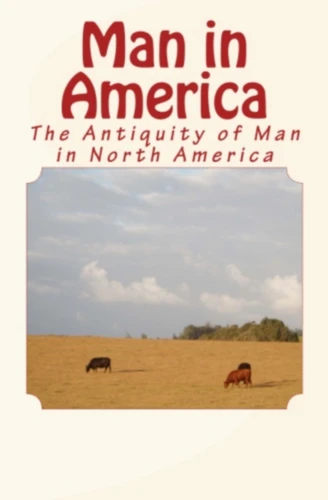Man in America. The Antiquity of Man in North America
Par : ,Formats :
Disponible dans votre compte client Decitre ou Furet du Nord dès validation de votre commande. Le format Multi-format est :
- Pour les liseuses autres que Vivlio, vous devez utiliser le logiciel Adobe Digital Edition. Non compatible avec la lecture sur les liseuses Kindle, Remarkable et Sony
 , qui est-ce ?
, qui est-ce ?Notre partenaire de plateforme de lecture numérique où vous retrouverez l'ensemble de vos ebooks gratuitement
Pour en savoir plus sur nos ebooks, consultez notre aide en ligne ici
- Nombre de pages132
- FormatMulti-format
- ISBN978-2-36659-139-2
- EAN9782366591392
- Date de parution07/03/2016
- Protection num.NC
- Infos supplémentairesMulti-format incluant ePub avec ...
- ÉditeurLE MONO (EDITIONS)
Résumé
"When the Europeans came to this continent at the end of the fifteenth century they found it already inhabited by races of men very different from themselves. These people, whom they took to calling 'Indians, ' were spread out, though very thinly, from one end of the continent to the other. Who were these nations, and how was their presence to be accounted for? To the first discoverers of America, or rather to the discoverers of the fifteenth and sixteenth centuries (Columbus and his successors), the origin of the Indians presented no difficulty.
To them America was supposed to be simply an outlying part of Eastern Asia, which had been known by repute and by tradition for centuries past. Finding, therefore, the tropical islands of the Caribbean sea with a climate and plants and animals such as they imagined those of Asia and the Indian ocean to be, and inhabited by men of dusky colour and strange speech, they naturally thought the place to be part of Asia, or the Indies.
The name 'Indians, ' given to the aborigines of North America, records for us this historical misunderstanding. But a new view became necessary after Balboa had crossed the isthmus of Panama and looked out upon the endless waters of the Pacific, and after Magellan and his Spanish comrades had sailed round the foot of the continent, and then pressed on across the Pacific to the real Indies. It was now clear that America was a different region from Asia."
To them America was supposed to be simply an outlying part of Eastern Asia, which had been known by repute and by tradition for centuries past. Finding, therefore, the tropical islands of the Caribbean sea with a climate and plants and animals such as they imagined those of Asia and the Indian ocean to be, and inhabited by men of dusky colour and strange speech, they naturally thought the place to be part of Asia, or the Indies.
The name 'Indians, ' given to the aborigines of North America, records for us this historical misunderstanding. But a new view became necessary after Balboa had crossed the isthmus of Panama and looked out upon the endless waters of the Pacific, and after Magellan and his Spanish comrades had sailed round the foot of the continent, and then pressed on across the Pacific to the real Indies. It was now clear that America was a different region from Asia."
"When the Europeans came to this continent at the end of the fifteenth century they found it already inhabited by races of men very different from themselves. These people, whom they took to calling 'Indians, ' were spread out, though very thinly, from one end of the continent to the other. Who were these nations, and how was their presence to be accounted for? To the first discoverers of America, or rather to the discoverers of the fifteenth and sixteenth centuries (Columbus and his successors), the origin of the Indians presented no difficulty.
To them America was supposed to be simply an outlying part of Eastern Asia, which had been known by repute and by tradition for centuries past. Finding, therefore, the tropical islands of the Caribbean sea with a climate and plants and animals such as they imagined those of Asia and the Indian ocean to be, and inhabited by men of dusky colour and strange speech, they naturally thought the place to be part of Asia, or the Indies.
The name 'Indians, ' given to the aborigines of North America, records for us this historical misunderstanding. But a new view became necessary after Balboa had crossed the isthmus of Panama and looked out upon the endless waters of the Pacific, and after Magellan and his Spanish comrades had sailed round the foot of the continent, and then pressed on across the Pacific to the real Indies. It was now clear that America was a different region from Asia."
To them America was supposed to be simply an outlying part of Eastern Asia, which had been known by repute and by tradition for centuries past. Finding, therefore, the tropical islands of the Caribbean sea with a climate and plants and animals such as they imagined those of Asia and the Indian ocean to be, and inhabited by men of dusky colour and strange speech, they naturally thought the place to be part of Asia, or the Indies.
The name 'Indians, ' given to the aborigines of North America, records for us this historical misunderstanding. But a new view became necessary after Balboa had crossed the isthmus of Panama and looked out upon the endless waters of the Pacific, and after Magellan and his Spanish comrades had sailed round the foot of the continent, and then pressed on across the Pacific to the real Indies. It was now clear that America was a different region from Asia."



